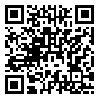Sat, Jul 19, 2025
[Archive]
Volume 13, Issue 4 (12-2023)
ASE 2023, 13(4): 4225-4235 |
Back to browse issues page
Download citation:
BibTeX | RIS | EndNote | Medlars | ProCite | Reference Manager | RefWorks
Send citation to:



BibTeX | RIS | EndNote | Medlars | ProCite | Reference Manager | RefWorks
Send citation to:
Ghasempoor H, Keshavarzi A, Saeidi Googarchin H. Finite element analysis of an adhesively bonded AlCFRP square section under axial & oblique loading. ASE 2023; 13 (4) :4225-4235
URL: http://ijae.iust.ac.ir/article-1-652-en.html
URL: http://ijae.iust.ac.ir/article-1-652-en.html
Abstract: (12911 Views)
The utilization of adhesively bonded square sections (ABSS) serves to enhance energy absorption and specific energy absorption (SEA) when subjected to oblique loading. Finite element models utilizing LS-DYNA were constructed in order to examine the deformation mode and load-displacement characteristics of ABSS and hybrid aluminum/carbon fiber reinforced polymer models. Subsequently, an evaluation was conducted on the general parameter pertaining to crashworthiness and the capacity for absorption of energy. The results reveal that an increase in the quantity of Carbon Fiber Reinforced Polymer (CFRP) layers within the stacking sequence of [0,90] affords enhanced potential for energy absorption. Conversely, the stacking sequence of [90] exhibits an incongruity with this trend, and achieves superior energy absorption capacity with a count of 4 CFRP layers rather than 8.
The present study indicates that carbon fiber reinforced polymer (CFRP) possessing a stacking sequence of [90] exhibits superior energy absorption capacity under both axial and oblique loading conditions at an inclination angle of 10 degrees. In contrast, the use of eight layers of CFRP with a stacking sequence of [0, 90] is found to yield better performance in achieving both axial and oblique loading up to 10 degrees.
The present study indicates that carbon fiber reinforced polymer (CFRP) possessing a stacking sequence of [90] exhibits superior energy absorption capacity under both axial and oblique loading conditions at an inclination angle of 10 degrees. In contrast, the use of eight layers of CFRP with a stacking sequence of [0, 90] is found to yield better performance in achieving both axial and oblique loading up to 10 degrees.
Keywords: Carbon fiber reinforced plastic (CFRP), Thin-walled structures, Specific energy absorption (SEA), Crashworthiness, Oblique loading
Type of Study: Research |
Subject:
Body structure
Send email to the article author
| Rights and permissions | |
 | This work is licensed under a Creative Commons Attribution-NonCommercial 4.0 International License. |






